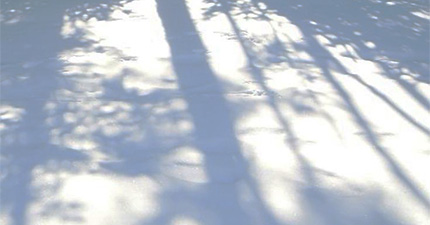This is me playing around with something for fun and tinkering. I’m not proposing this as some kind of new astrological technique. I haven’t seen any sources that use what I’ve been tinkering around with as a technique. I’m pretty much just using one technique based off of one philosophical tradition in another system to see what happens. This might be a little sacrilegious or something but here goes.
I’ve been learning bazi or eight character natal charts which is part of Chinese astrology. A lot of different Asian philosophies really emphasize the meaning of absence(I say Asian instead of Chinese because I think various but not all Asian philosophies are interested in lack). In ink painting, for example, you don’t cover the whole surface but you do in western oil painting. There’s just more meaning for absence in all kinds of things. In cooking, blandess might be an important part of the palette so that other flavors pop. In narratives, ambivalence can carry its own meaning.
In bazi, that presence of absence takes the form of looking for the most useful god or yong shen that a chart requires. This useful god is more likely to be something that the chart doesn’t already have a lot of or lacks. In other words, a bit part of learning bazi has been about looking for what the chart doesn’t have instead of what it does have.
For example, if your chart has a lot of water and fire but no earth, then the water and fire might be really volatile with each other, spitting and hissing when they come into contact. You might need earth to put your chart to use since earth will control the water and drain the fire. If your chart has a ton of metal, you might use some wood since wood will put the metal to use. It all depends. Finding the useful god takes a lot of practice and is often not the thing that you initially expect.
But I like this way of working with the elements. The idea is that you’re trying to create movement or transmutation in the chart. If things stay stagnant then they will die. You have to allow life to move through the chart to keep it functional and alive. The useful god supports transmutation through the five processes or elements.
Because your fate is made up of things you’re born with and also the things that occur during your lifetime, you might look for the useful god in the people you meet or the pillars of the time. Meeting your useful god might be a time when things really start going for you. You might develop as a person in ways that you really needed.
In western astrology, the elements are much more likely to be considered on their own. We know that water is phlegmatic and wet and warm but we don’t really have a system for creating more water or draining it. In western astrology, the thing that creates the most complex relationships between planets are essential conditions.
I actually get a lot of people who ask me what it means when a sign, an element, or a quadrant is completely empty. Some people read meanings in this (I used to and stopped at a certain point) but, usually, we take it as a matter of course that empty places in the chart don’t stay empty. Transiting planets will eventually fill them so it doesn’t need to mean too much.
I think that it’s kind of a philosophical shift. Western astrology is interested in what is. It doesn’t have that much vocabulary to address absence. But people are interested in absence because we are interested in what could be and what isn’t.
So, I was playing around with the idea of useful gods and mutual reception.
I’ll just take my own chart as an example since that’s the one I’m most familiar with. I have three debilitated planets: Mercury in Pisces, Venus in Aries, and Jupiter in Virgo.
What would be the most useful transit or synastry to bring those planets into more support?
For Mercury in Pisces, it’s Venus in Gemini. The square between these two planets brings a mixed mutual reception. Mercury rules Gemini and Venus exalts in Pisces. These two planets can support each other beautifully. It just so happens that I do have a lot of fun whenever I get to talk with Venus in Gemini people. Transiting Venus moving through Gemini is also moving through my fifth house and I usually have a lot more fun in the spring when this tends to happen.
For my Venus in Aries, either Sun or Mars in either Capricorn or Libra could be helpful. Venus enjoys Capricorn by triplicity. Both the Sun and Mars also like Aries. Capricorn and Libra are also both in aspect to Aries. For Jupiter in Virgo, Mercury in Cancer is probably very supportive since that creates a reception by exaltation with two planets that are also sextiled.
Maybe I want to help my Venus and Jupiter at the same time—Mars in Cancer or Mercury in Cancer can help both. Both Venus and Jupiter like Cancer. Mars likes both Virgo and Aries. Mercury likes Aries and Virgo too.
As I was doing this with my own chart, I started to realize that these are all placements that I regularly see in the natal charts of my closest friends or in people who I tend to admire. I have a lot of friends with either Mars or Mercury in Cancer. I thrive when Venus transits Gemini. I feel like a lot of Capricorn Mars or Libra Mars people are inspirational to me.
It’s interesting because I never would have really looked for these specific placements as having any special significance for me without learning the concept of useful god in bazi. These aren’t placements that I have in my chart so why would I be interested? Why would I be interested in things that I’m not?
Maybe because I’m not just interested in who I am—I’m also interested in how the things that I’m not might affect my life.
If you find this weird little technique helpful, you can try it out with your chart. It’s not really a technique because it just uses well known existing techniques such as mutual reception or pushing nature or favor. I guess I’m just playing around with that technique through another ideological viewpoint, with the notion that things we lack might matter to us.
If you’d like to try it out, here are some steps to do so:
1. Look at your chart as a wheel. You’ll need to see it as a wheel for this to really make sense.
2. Look for a planet that you want to help. Now, find the signs that can form an aspect with that planet. Just use whole sign aspects for this since we’re playing around and approximating so we don’t need to get too exact here.
3. Look back at the planet you want to help. What planets do well in the sign that the first planet is in?
4. Look at the signs that make an aspect to that first planet. Which of these signs does that first planet do well in?
5. Where do you lack planets or support? Remember—we’re looking for absences in your chart. You might find that a debilitated planet is already helped out by another planet in your chart. Skip over existing support you have already to look for absence instead.
From there, you can even find out if a planet transiting particular degrees becomes more or less helpful for your chart. Fine tune the aspects.
Try this out. I’d love to hear your thoughts about what you notice. It’s just something I’ve been playing around with. Also, there’s the concept of a god of destruction in bazi too which is something that causes more blockage or chaos in your life. You can look for that in your chart too. I like to focus on support so I just went over useful gods.


